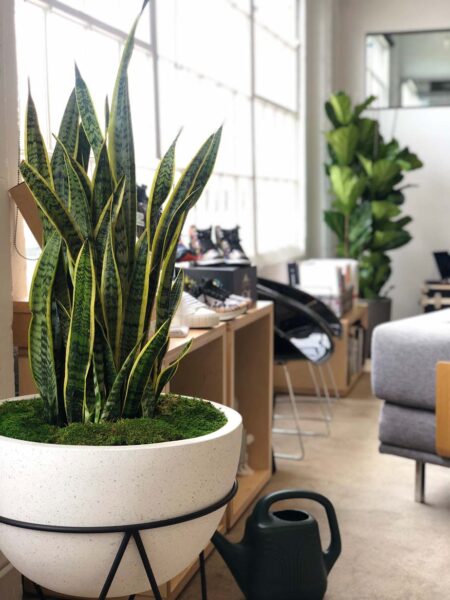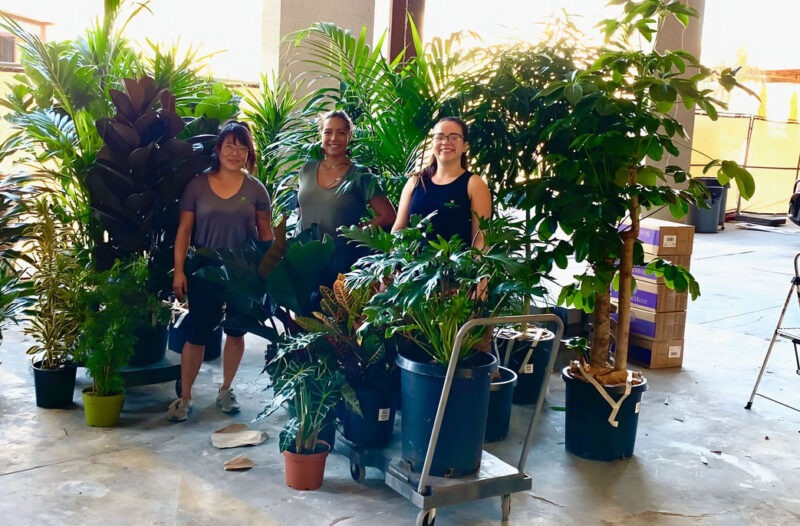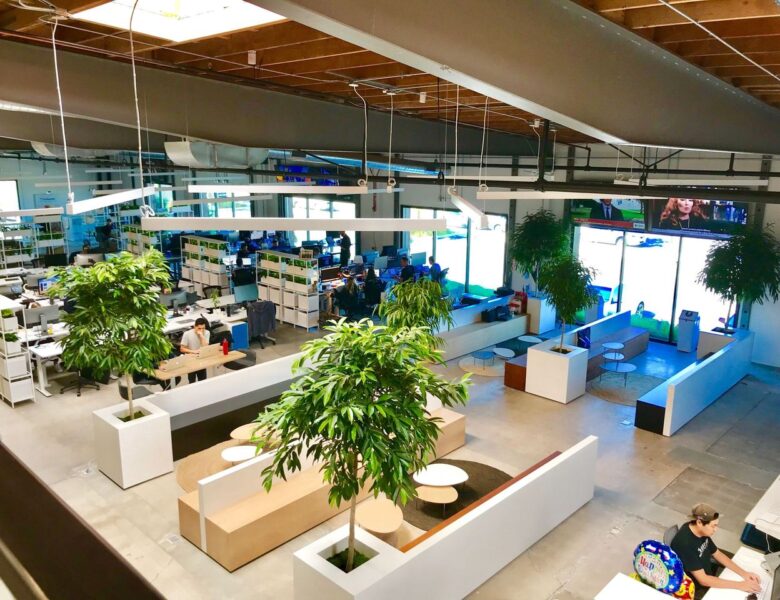
At Growing Roots, there’s nothing our team of plant care professionals enjoys more than finding new opportunities to bring the outdoors in. How exactly do we do this? By following the essential pillars of biophilic design: a design philosophy that redefines spaces by drawing out the innate connections we all share with the natural world.
Whether transforming California homes into heavenly, plant-filled havens or offices into a soothingly productive oasis, we incorporate biophilic design into every one of our interiorscape offerings.
Keep reading to learn more about this form of nature-inspired interior design and discover the three essential pillars that define it.
What is Biophilic Design
Biophilic design is an interiorscape design approach that aims to holistically change the healing atmosphere of a space through the use of natural elements.
This approach derives its name from biophilia, a term popularized by the American biologist and author Edward O. Wilson in his 1984 work of the same name. Composed of the Greek words “bio-,” meaning “life,” and “-philia,” meaning “friendship” or “affection,” biophilia refers to our innermost desire to connect with nature. According to Wilson, this human tendency may even have a genetic component.
As practitioners of biophilic design, our team at Growing Roots seeks to foster these connections through every residential and commercial installation we create. By drawing on this relationship between our clients and their sense of the natural, we naturally help design spaces that deliver an abundance of benefits.
What are the Benefits of Biophilic Design?

Even though we’ve defined biophilic design as central to the human experience, you may be wondering about its unique benefits. What positively differentiates nature-inspired interior design and architecture from other common design principles?
According to research and anecdotal evidence, the benefits of biophilic design have a direct impact on our behavior and emotions, maintaining lasting effects on our mood, productivity, and overall well-being. In fact, biophilic office spaces and residences can:
By curating and caring for a selection of hand-picked plants in your space, our team can create a peaceful sanctuary that looks natural, feels natural, and invokes the restorative effects of nature indoors.
The Three Pillars of Biophilic Design
Biophilic design is so much more than a way to organize your space. It’s an in-depth philosophy that grounds itself with three core beliefs. Read on to learn more about the pillars of biophilic design and how we incorporate them at Growing Roots.
Pillar #1: Nature in the Space
The first pillar of biophilic design is Nature in the Space. This principle focuses on the integration of plants, water, and even animals into an indoor environment. For Growing Roots, Nature in the Space is the foundation of our biophilic design choices. The elements that define it all elicit direct connections with nature, which tend to produce the strongest biophilic responses.
There are many types of natural features included in this biophilic design pillar, including (but not limited to):
A key component of this pillar is dynamic movement, which categorizes certain installations for their ability to create a sense of motion and flow within a space. Think of water trickling down a fountain, an aromatic breeze passing through an open window, or even birdsong resounding through a speaker. These elements, along with their static counterparts, work together to create an immersive natural scene indoors.
Pillar #2: Natural Analogues
The second pillar of biophilic design is what we call Natural Analogues. While our first pillar offers a direct connection to the natural world, this second pillar evokes an indirect connection to it through elements that recall nature in some way. We accomplish this through the use of a selection of physical objects, colors, textures, and patterns.
Examples of this pillar can manifest through the use of:
- Furniture, such as pieces designed with organic shapes or natural patterns and textiles
- Artwork and decór, such as paintings, statues, and accents that literally or figuratively depict nature
- Wallpaper and carpets, such as those showcasing floral- or fractal-like patterns
When arranged intentionally, exposure to Natural Analogues can deliver measurable positive benefits. By combining them with those of the previous pillar, we can create an even more impactful green environment.
Pillar #3: Nature of the Space
The third pillar of biophilic design is Nature of the Space. Not to be confused with the first pillar, this principle focuses on how the design and layout of a specific space reflects our relationship with the natural world. In other words, it’s a consideration of the psychological and physiological responses humans have to different indoor environments.
For thousands of years, our ancestors lived in open savannahs shaded among low-growing grasses and clusters of trees. Because of this, humans tend to be drawn to open spaces that offer broad views of our surroundings. Translating this indoors often means curating a space with a high degree of depth and openness.
Sometimes, this is already achieved within the architecture of a place. Other times, our plant care professionals at Growing Roots need to seek new opportunities to do so, either by creating the illusion of space through lush natural displays or creating new space by removing elements that interrupt flow.
Bringing the Outdoors in with Biophilic Design

At Growing Roots, we spread plant love by helping our clients bring the natural back to their lived environments. Through our nature-inspired workplaces and home interiors, we help our community embrace the benefits of biophilic design and return to a renewed sense of place and self through plants.
We offer all new customers free consultations to understand how we can naturally enhance their surroundings with our plants. While considering all the pillars of biophilic design, we analyze as many details as possible, from existing floor plans and surrounding landscapes to a place’s current colors, lighting, and more.
Interested in adding biophilic design to your space with our specialty plant curations? Contact us today. To view the spaces we’ve brought back to life, take a look at our portfolio.


 Celebrating National Indoor Plant Week: Bringing Nature Indoors
Celebrating National Indoor Plant Week: Bringing Nature Indoors